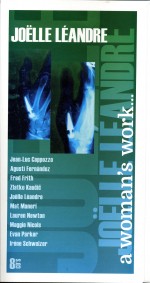 Marketing considerations aside, how best can a musician mark an important milestone or significant creativity? With recorded music the result is usually multiple discs. In honor of French bassist Joëlle Léandre’s recent 60th birthday for instance, there’s A Woman’s Work … (NotTwo MW950-2 notwo.com), an eight-disc boxed set. Almost six hours of music, the 42 tracks were recorded between 2005 and 2016, comprising one solo disc and the rest intense interaction with such associates as trumpeter Jean-Luc Cappozzo, tenor saxophonist Evan Parker, violist Mat Maneri, guitarist Fred Frith, percussionist Zlatko Kaučič, pianists Agustí Fernández or Irène Schweizer and vocalists Lauren Newton or Maggie Nicols. With improvisers from six different countries working alongside, the bassist’s charm, humor, vigour and adaptability are highlighted.
Marketing considerations aside, how best can a musician mark an important milestone or significant creativity? With recorded music the result is usually multiple discs. In honor of French bassist Joëlle Léandre’s recent 60th birthday for instance, there’s A Woman’s Work … (NotTwo MW950-2 notwo.com), an eight-disc boxed set. Almost six hours of music, the 42 tracks were recorded between 2005 and 2016, comprising one solo disc and the rest intense interaction with such associates as trumpeter Jean-Luc Cappozzo, tenor saxophonist Evan Parker, violist Mat Maneri, guitarist Fred Frith, percussionist Zlatko Kaučič, pianists Agustí Fernández or Irène Schweizer and vocalists Lauren Newton or Maggie Nicols. With improvisers from six different countries working alongside, the bassist’s charm, humor, vigour and adaptability are highlighted.
Solo on CD 6 from 2005, Léandre’s improvisations are as mesmerizing as they are mystifying. Consisting of bow slaps resonating with woody ballast, her circular attack is solipsistic enough to confirm its singularity, but so alive with twists that she sometimes seems pleasantly taken aback by what’s produced. As she plucks or saws her strings, at points she could be two bull fiddlers working in counterpoint. The climax is reached on the final track when, like a marathoner getting an energy boost, she extends still further, working some romantic beauty into her arco splays, while at the same time mocking it with vocalizing ranging from guttural growls to bel-canto gurgles. As unlike as a chocolate chip sundae and a tofu pudding, the bassist’s two 2016 vocal duets are equally valid. Eight performances with the American Newton on CD3 are the most traditional. With silky voice, the singer hopscotches among scat, lullabies, octave jumps and keening cries, as Léandre’s mischievous side appears. Besides sharpened slices that create spiccato echoes, she verbalizes an ironic obbligato to Newton’s singing. Under her breath, Léandre bawls out unexpected noises that are sly without being disruptive. Léandre, the Swiss Schweizer and the Scot Nicols have been Les Diaboliques for more than 25 years, and their performance on CD1 is cohesive, since Léandre’s disruptive tendencies can’t dominate when the others are textural dissectors as well. The showdown is mostly Léandre-Nicols, with the bull fiddler mumbling and projecting mercurial string buzzes as a divergent sideshow to the vocalist. More stream of consciousness than self-involved, Nicols could be playing all parts in a radio play, encompassing crone cackling, infant cries, feline purrs and canine yelps. Sliding from brouhaha to babble, she opens up the performance enough for instrumental virtuosity to make her vocal gymnastics stand out. More concentrated levels of instrumental dexterity are the main thrusts of Léandre’s 2011 meeting with Maneri on CD2; her match-up with Frith in 2016 on CD5; her 2015 tête-à-tête with Cappozzo (CD4); and the meeting of minds with Kaučič from 2015 (CDs 7 and 8). Frith’s alt-rock background makes that duo the most distinctive, if not the most frustrating. Committed to knob twisting, Frith sashays among rock, country and outer-space-like tones. Léandre’s acoustically dynamic thrusts almost dare him to use his mechanized equipment to gain the upper hand, then volley back any pattern he emits. More simpatico, Maneri’s mastery of the viola means that both he and the bassist can challenge one other while emphasizing the woodiness of their instruments. The result coordinates improvisational freedom, pre-modern string shading, and 20th-century aleatory patterns. So relaxed that he almost limits his contributions to cymbals, Kaučič’s dances a pas de deux with the bassist, matching her mercurial stops and inventive guitar-like twangs with bell-like resonation plus supple metal slides. From that same date, when Fernández and Parker join the drummer and bassist, jazz-oriented intersections are glimpsed, palimpsest-like, along with free improvisation. The saxophonist builds up to a staccato narrative, which Léandre hurries along with tremolo buzzes and arco strokes. Fernández’s piano pressure is so dense that he could be playing boogie-woogie. Illuminatingly, Léandre’s most satisfied improvising is alongside Cappozzo. With jazz-like allusions, the warmth communicated by intertwining brass and string textures allows the two to switch forefront and backing roles from one to the other without breaches, making room for Arcadian and ambulatory motions. Outputting chromatic expositions in graceful arcs, Cappozzo’s self-possessed playing calms the bassist’s frenetic instrumental and verbal asides, creating a cumulative sound that is profound and polished.
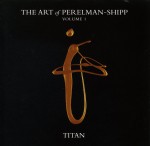 Brazilian tenor saxophonist Ivo Perelman takes a different route. If Léandre has built a single dwelling, Perelman is more like a developer putting different styles of edifices in designated areas. With frenetic bites of Free Jazz extravagance, Perelman presents his rhapsodic interface with American pianist Matthew Shipp in seven volumes titled The Art of Perelman-Shipp (leorecords.com),Vol. 1 – Titan (CD LR 794); Vol. 2 – Tarvos (CD LR 795); Vol. 3 – Pandora (CD LR 796); Vol. 4 – Hyperion (CD LR 797); Vol. 5 – Rhea (CD LR 798); Vol. 6 – Saturn (CD LR 786) and Vol. 7– Dione (CD LR 799). Only Saturn is a duo, with the others featuring the two plus, on different discs, bassists William Parker or Michael Bisio, and drummers Andrew Cyrille, Bobby Kapp or Whit Dickey.
Brazilian tenor saxophonist Ivo Perelman takes a different route. If Léandre has built a single dwelling, Perelman is more like a developer putting different styles of edifices in designated areas. With frenetic bites of Free Jazz extravagance, Perelman presents his rhapsodic interface with American pianist Matthew Shipp in seven volumes titled The Art of Perelman-Shipp (leorecords.com),Vol. 1 – Titan (CD LR 794); Vol. 2 – Tarvos (CD LR 795); Vol. 3 – Pandora (CD LR 796); Vol. 4 – Hyperion (CD LR 797); Vol. 5 – Rhea (CD LR 798); Vol. 6 – Saturn (CD LR 786) and Vol. 7– Dione (CD LR 799). Only Saturn is a duo, with the others featuring the two plus, on different discs, bassists William Parker or Michael Bisio, and drummers Andrew Cyrille, Bobby Kapp or Whit Dickey.
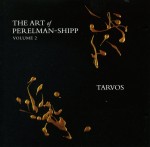 To get a handle on the Perelman-Shipp discs recorded between August and November 2016, first consider Saturn. The result of more than 20 years of musical cross-fertilization, the untitled improvisations show the duo’s comfort level, with Perelman at times eschewing his usual altissimo ladder-climbing for a breathy tone and burlesquing avant-garde solemnity by shoehorning a quote from Heart and Soul into his solo on track one. While the reedist’s unique mixture of whining split tones, intense triple tonguing and theatricality at the climax stays intact, it’s framed by whimsical comping from Shipp, which calmly advances while showcasing skills like suddenly pedalling into the piano’s darker regions or maintaining a steadying pace, as Perelman wrings every extension from each reed outburst. Titan, which adds Parker to the duo and Hyperion, where Bisio completes the trio, feature similar communication, since Bisio is part of the pianist’s band, while Parker and Shipp are longtime collaborators. Parker creates a percussive undertow that expands the saxophonist’s expression, as he follows him through pitch variations and unexpected quickening and decelerating of the narratives. Vigour distinguishes the nearly 20-minute final track as Parker’s vibrant arco pumping surrounds the others’ explorations.
To get a handle on the Perelman-Shipp discs recorded between August and November 2016, first consider Saturn. The result of more than 20 years of musical cross-fertilization, the untitled improvisations show the duo’s comfort level, with Perelman at times eschewing his usual altissimo ladder-climbing for a breathy tone and burlesquing avant-garde solemnity by shoehorning a quote from Heart and Soul into his solo on track one. While the reedist’s unique mixture of whining split tones, intense triple tonguing and theatricality at the climax stays intact, it’s framed by whimsical comping from Shipp, which calmly advances while showcasing skills like suddenly pedalling into the piano’s darker regions or maintaining a steadying pace, as Perelman wrings every extension from each reed outburst. Titan, which adds Parker to the duo and Hyperion, where Bisio completes the trio, feature similar communication, since Bisio is part of the pianist’s band, while Parker and Shipp are longtime collaborators. Parker creates a percussive undertow that expands the saxophonist’s expression, as he follows him through pitch variations and unexpected quickening and decelerating of the narratives. Vigour distinguishes the nearly 20-minute final track as Parker’s vibrant arco pumping surrounds the others’ explorations. 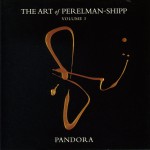 At times Shipp creates a stream of high-frequency key-clipping in tandem with Perelman’s overt overblowing, while elsewhere the saxophonist and bassist bond, allowing each pattern suggested by one to be completed and improved on by the other. If Parker’s work is the stuff of high drama, then Bisio’s style is playful enough to be sitcom-ready. The bassist’s peppy interface is used in a connective fashion, though he also steps forward with tonal variations. His bowing on Part 8 adds to tremolo piano lines and high reed pitches to cement a moderate and mystical theme, while his pizzicato sluices on Part 9 push the action along so that the saxophonist’s squeals resemble cowboy yodels.
At times Shipp creates a stream of high-frequency key-clipping in tandem with Perelman’s overt overblowing, while elsewhere the saxophonist and bassist bond, allowing each pattern suggested by one to be completed and improved on by the other. If Parker’s work is the stuff of high drama, then Bisio’s style is playful enough to be sitcom-ready. The bassist’s peppy interface is used in a connective fashion, though he also steps forward with tonal variations. His bowing on Part 8 adds to tremolo piano lines and high reed pitches to cement a moderate and mystical theme, while his pizzicato sluices on Part 9 push the action along so that the saxophonist’s squeals resemble cowboy yodels.
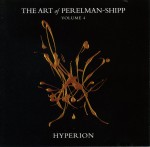 Cyrille on Dione and Kapp on Tarvos possess contrasting drum philosophies. Cyrille brings a staccato drive to his accompaniment, where unruffled, positioned beats unite the others’ emotional excesses into a logical narrative. This is obvious on Part 6 when beside jerky piano runs, intermittent percussion clip-clops push reed squeaks from altissimo to moderato. On Part 8, the drummer’s motivating shuffle is such that what begins as a keyboard gallop turns to straight-ahead swing, with even the saxophonist’s tone balladic. Hard-toned and sharp where Cyrille is restrained, Kapp is upfront with his crackling strategies as early as Tarvos’ first track. By the final tune, his textural prodding, encompassing bass drum chopping and cymbal reverb, creates a situation swinging enough to make Shipp’s keyboard-blurring cross tones and Perelman’s peeps and dribbling smears bond animatedly.
Cyrille on Dione and Kapp on Tarvos possess contrasting drum philosophies. Cyrille brings a staccato drive to his accompaniment, where unruffled, positioned beats unite the others’ emotional excesses into a logical narrative. This is obvious on Part 6 when beside jerky piano runs, intermittent percussion clip-clops push reed squeaks from altissimo to moderato. On Part 8, the drummer’s motivating shuffle is such that what begins as a keyboard gallop turns to straight-ahead swing, with even the saxophonist’s tone balladic. Hard-toned and sharp where Cyrille is restrained, Kapp is upfront with his crackling strategies as early as Tarvos’ first track. By the final tune, his textural prodding, encompassing bass drum chopping and cymbal reverb, creates a situation swinging enough to make Shipp’s keyboard-blurring cross tones and Perelman’s peeps and dribbling smears bond animatedly.
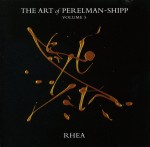 Culmination of this musical equivalent of Lawrence Durrell’s The Alexandria Quartet, where situations change shadings depending on the book, are Pandora and Rhea. Dickey makes a quartet with Perelman, Shipp and Parker on the first disc and with Perelman-Shipp-Bisio on the second. The Parker-Dickey team helps maintain the tumultuous level of action that is Perelman-Shipp’s specialty. This framing on tunes like Track 6 means that Perelman’s consistent altissimo exploration and narrowing yelps fit perfectly. He even shoves a lick from Cherokee into his descending slurs. Freed from the rhythmic function, Shipp has space to indulge in impressionistic reprises, as on Track 3 where the reedist’s exposition spends more time in lower-case description than showy tongue smears. Rhea’s tracks intersect even more notably.
Culmination of this musical equivalent of Lawrence Durrell’s The Alexandria Quartet, where situations change shadings depending on the book, are Pandora and Rhea. Dickey makes a quartet with Perelman, Shipp and Parker on the first disc and with Perelman-Shipp-Bisio on the second. The Parker-Dickey team helps maintain the tumultuous level of action that is Perelman-Shipp’s specialty. This framing on tunes like Track 6 means that Perelman’s consistent altissimo exploration and narrowing yelps fit perfectly. He even shoves a lick from Cherokee into his descending slurs. Freed from the rhythmic function, Shipp has space to indulge in impressionistic reprises, as on Track 3 where the reedist’s exposition spends more time in lower-case description than showy tongue smears. Rhea’s tracks intersect even more notably. 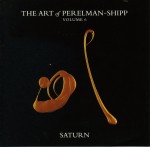 At over 16 minutes in length, the first track could be a suite in itself. Backed by double bass thumps and the pianist’s tempo-defining runs, Perelman’s introduction is thematic and descriptive. He recaps the head with elevated power in the final sequence atop an assembly line of drum accents.
At over 16 minutes in length, the first track could be a suite in itself. Backed by double bass thumps and the pianist’s tempo-defining runs, Perelman’s introduction is thematic and descriptive. He recaps the head with elevated power in the final sequence atop an assembly line of drum accents.
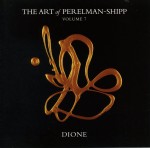 Projects like these are reminiscent of the fact that whether you buy chocolates by the box or individually you can only savour one at a time. For maximum appreciation, this parsimony in consumption should be applied to both the boxed set and the CD series.
Projects like these are reminiscent of the fact that whether you buy chocolates by the box or individually you can only savour one at a time. For maximum appreciation, this parsimony in consumption should be applied to both the boxed set and the CD series.



